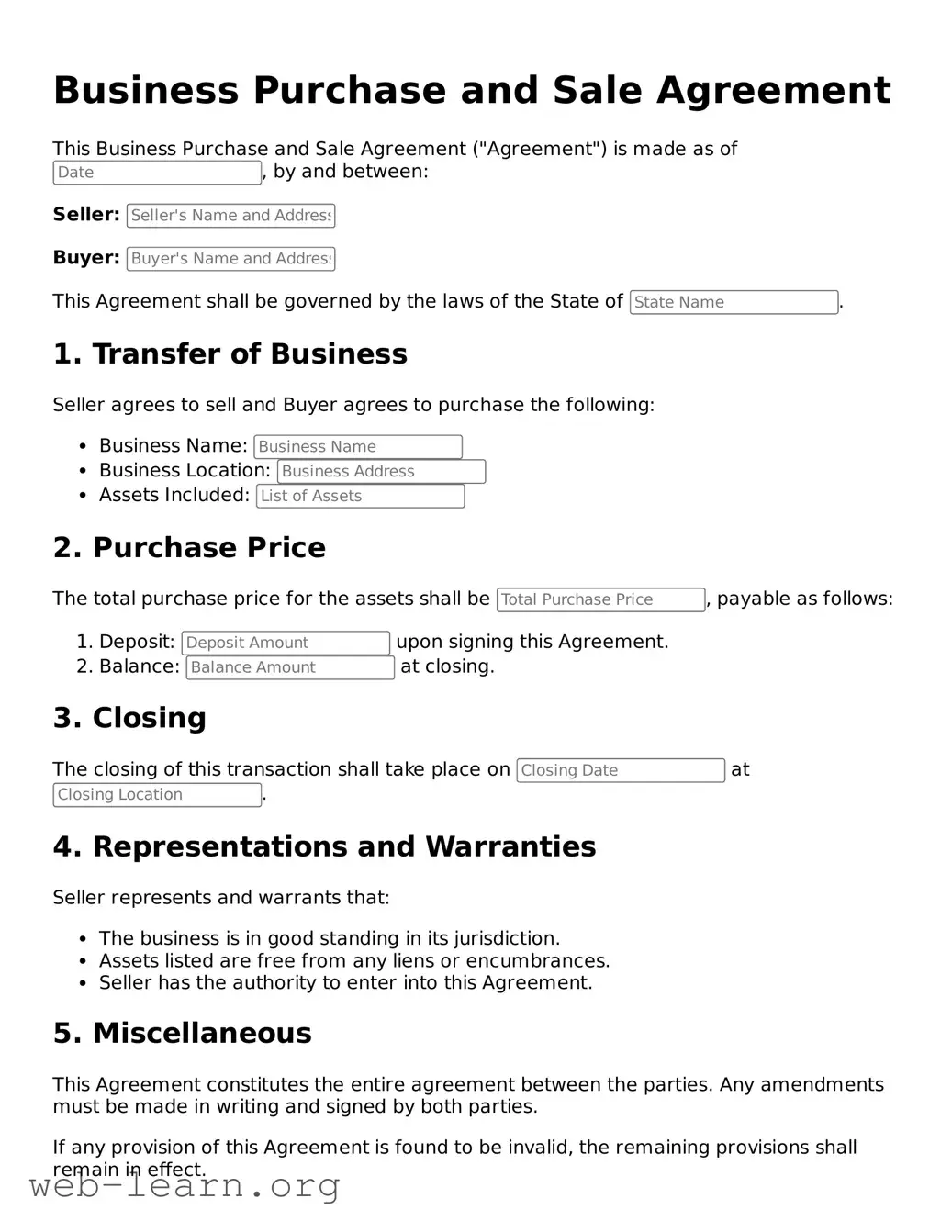Attorney-Approved Business Purchase and Sale Agreement Template
The Business Purchase and Sale Agreement is a legal document that outlines the terms and conditions involved in buying or selling a business. This agreement serves as a critical framework, ensuring that both parties understand their rights and obligations. Streamlining the transaction process, it provides clarity and security for all involved.
